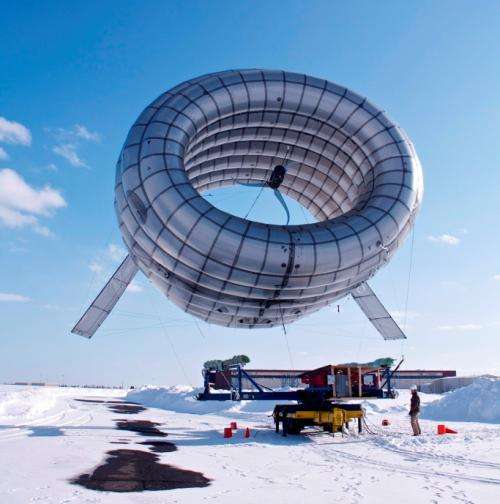February 9, 2015 report
Best of Last Week – new look at Schrodinger's cat, a large floating wind turbine and why red wine might help memory

It was an intriguing week for physics as a team of researchers described the wavefunction of Schrödinger's cat in attempting to answer the question of whether the cat is truly both dead and alive at the same time, or whether it is all just in our heads—they are arguing for the former.
It was also a pretty big week for engineering as the U.S. navy unveiled a firefighting robot prototype at tech expo—showing the machine was capable of walking across uneven floors, finding equipment and using a hose. Also another combined team of researchers demonstrated an underwater high-speed robot that mimics octopus propulsion and another team at Altaeros Energies unveiled a large floating wind turbine that can bring electricity where it is needed—the team describes it as a balloon that lifts a turbine.
In unrelated news, a combined team of U.S., Chinese and Japanese researchers discovered a new structural variant of carbon—penta-graphene, like graphene, it is just one atom thick and has exciting properties; the difference is that it forms as a pentagonal pattern of tiles. Also a team at MIT announced a new mathematical theory that may explain patterns in fingerprints, raisins, and microlenses. They found that curvature is the main parameter responsible for creating the types of patterns that form. And another team of researchers discovered an organism that has not evolved in more than 2 billion years—a deep sea microorganism that represents the greatest absence of evolution found thus far. Also, good news for those with difficulty getting medical attention—engineers created a smartphone accessory for rapid diagnosis of infectious diseases—HIV and syphilis—at point of care. The team at Columbia Engineering believes the device may help save lives in third-world countries. Perhaps less urgent, but still interesting, a trio of researchers at the University of Utrecht, conducted a study and found that cats with box access in shelters experience less stress—at least in the short term.
And finally, if you are one of the many who sip wine occasionally, it turns out you might be doing yourself a favor as a compound found in grapes and thus red wine may help prevent memory loss in your declining years. Perhaps a toast is in order.
© 2015 Phys.org





















